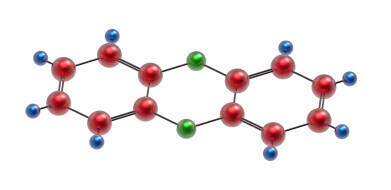GC-MS
Analysing for Dioxins
Nov 22 2023
The following techniques are used by regulatory agencies, environmental scientists, and industries to monitor and manage dioxin contamination effectively. Here, we'll explore some of the key techniques used in dioxin analysis:
Gas Chromatography-Mass Spectrometry (GC-MS): GC-MS is the gold standard for dioxin analysis. It separates complex mixtures of compounds, such as dioxins, into individual components based on their chemical properties and then identifies and quantifies them using mass spectrometry. This technique offers high sensitivity and specificity, enabling precise measurements of even trace levels of dioxins.
High-Resolution Mass Spectrometry (HRMS): HRMS instruments provide superior mass accuracy and resolution compared to conventional MS. This allows for more accurate identification and quantification of dioxin congeners (various forms of dioxins) and reduces the potential for false positives/negatives.
Isotope Dilution Mass Spectrometry (IDMS): IDMS is a technique used to enhance the accuracy of dioxin analysis. It involves adding known amounts of isotopically labelled internal standards to the sample, allowing for precise quantification while correcting for matrix effects and instrument variations.
Sample Preparation: Dioxins are often found in complex matrices like soil, sediments, and biological tissues. Techniques such as solid-phase extraction (SPE) and liquid-liquid extraction (LLE) are used to isolate dioxins from these matrices before analysis. Clean-up steps, like gel permeation chromatography (GPC) and sulphur removal, may also be necessary to remove interfering compounds.
Derivatisation: Dioxins are typically analysed as their methyl derivatives, which improves their chromatographic behaviour and sensitivity. Chemical derivatisation involves adding a methyl group to dioxin molecules to make them more amenable to GC-MS analysis.
Quality Control: Rigorous quality control measures, including the use of certified reference materials, blank samples, and spiked samples, are essential in dioxin analysis to ensure the accuracy and precision of results. Quality control also involves instrument calibration and validation procedures.
Data Interpretation: Sophisticated software tools are employed to process and interpret the vast amount of data generated during dioxin analysis. These tools help identify specific dioxin congeners, calculate concentrations, and assess compliance with regulatory limits.
High-Resolution Sampling: Collecting samples in a manner that minimises contamination is crucial. High-resolution sampling techniques, such as using stainless steel or glass containers, are employed to prevent the introduction of dioxins from sampling equipment.
Comprehensive Analytical Standards: The availability of comprehensive analytical standards is crucial for dioxin analysis. Certified reference materials and standard operating procedures (SOPs) are used to calibrate instruments and ensure accurate quantification.
More information online
Digital Edition
Chromatography Today - Buyers' Guide 2022
October 2023
In This Edition Modern & Practical Applications - Accelerating ADC Development with Mass Spectrometry - Implementing High-Resolution Ion Mobility into Peptide Mapping Workflows Chromatogr...
View all digital editions
Events
Apr 28 2024 Montreal, Quebec, Canada
May 05 2024 Seville, Spain
May 15 2024 Birmingham, UK
May 19 2024 Brno, Czech Republic
May 21 2024 Lagos, Nigeria




.jpg)









